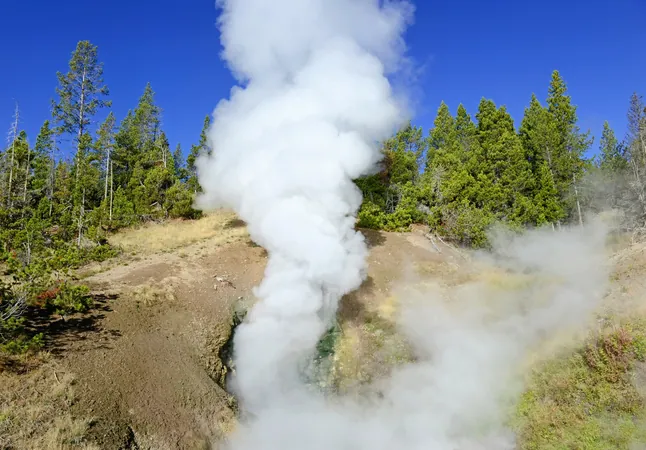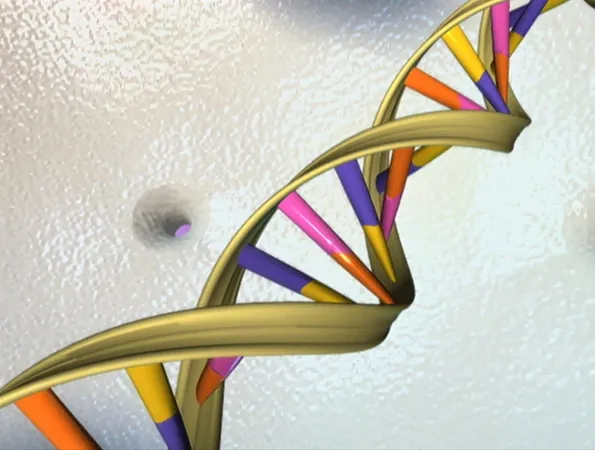
Unlocking the Secrets of Life: Earth’s Hidden Phosphorus Revolution
2025-07-06
Author: Jacob
How Did Life on Earth Really Begin?
The mystery of life’s origins has captivated humanity for centuries, with answers scattered among ancient rocks and oceans. One essential ingredient in this quest is phosphorus, a key element that plays a crucial role in every living organism.
The Phosphorus Puzzle
Phosphorus is integral to DNA, RNA, and cell membranes, making it vital for life. Yet, it primarily exists trapped in rocks within phosphate minerals that barely dissolve in water. This raises a perplexing question: how did early Earth manage to obtain enough phosphorus to ignite the spark of life?
A Journey into Earth's Ancient Depths
Researchers Yuya Tsukamoto and Takeshi Kakegawa from Tohoku University took on this riveting challenge by exploring deep beneath the ocean, specifically in the Pilbara Craton in Western Australia, home to some of the oldest seafloor rocks dating back 3.455 billion years.
Their findings were groundbreaking. They discovered that phosphorus was significantly leached from altered rocks compared to less altered ones, indicating that hot, hydrothermal fluids were responsible for this crucial extraction.
Unveiling the Hydrothermal Mechanics
The study didn't stop at identifying the presence of phosphorus; it delved deeper into understanding how these fluids facilitated the release. Tsukamoto noted the presence of two types of hydrothermal fluids: one rich in sulfur and hot enough to quickly break down minerals, and another unexpectedly mild, with a pH balance that allowed a unique chemical reaction with the ancient rocks.
This combination resulted in a shocking revelation: these fluids carried phosphorus concentrations up to 2 millimolar—nearly 1,000 times higher than today’s seas—suggesting that early Earth was not the barren landscape once assumed.
A Phosphorus-Rich Ancient Ocean
What’s more, the release of phosphorus from these hydrothermal systems potentially equaled or even surpassed the amounts entering our modern oceans through rivers and weathering processes. Tsukamoto highlighted the importance of these findings, stating that they provided tangible evidence of submarine hydrothermal activity contributing phosphorus to the early oceans.
The implications are staggering: nutrient-rich oceans may have nourished some of the earliest microbial life on our planet.
Beyond the Depths: Life's Potential Hotspots
The research also casts a spotlight on terrestrial hot springs, suggesting they could have played a role in releasing phosphorus as well. This expands the narrative beyond deep-sea vents to include steaming pools on land, opening new avenues for discovery.
Charting the Future of Phosphorus Research
Scientists are now eager to study phosphorus behavior in rocks throughout different geological periods, aiming to piece together a more comprehensive history of life on Earth.
A New Chapter in Earth’s Story
This study shines a light on the untapped potential of Earth’s ancient environments. It suggests that the building blocks of life might have originated from regions we've only just begun to probe—hidden beneath the waves and within ancient rocks.









 Brasil (PT)
Brasil (PT)
 Canada (EN)
Canada (EN)
 Chile (ES)
Chile (ES)
 Česko (CS)
Česko (CS)
 대한민국 (KO)
대한민국 (KO)
 España (ES)
España (ES)
 France (FR)
France (FR)
 Hong Kong (EN)
Hong Kong (EN)
 Italia (IT)
Italia (IT)
 日本 (JA)
日本 (JA)
 Magyarország (HU)
Magyarország (HU)
 Norge (NO)
Norge (NO)
 Polska (PL)
Polska (PL)
 Schweiz (DE)
Schweiz (DE)
 Singapore (EN)
Singapore (EN)
 Sverige (SV)
Sverige (SV)
 Suomi (FI)
Suomi (FI)
 Türkiye (TR)
Türkiye (TR)
 الإمارات العربية المتحدة (AR)
الإمارات العربية المتحدة (AR)